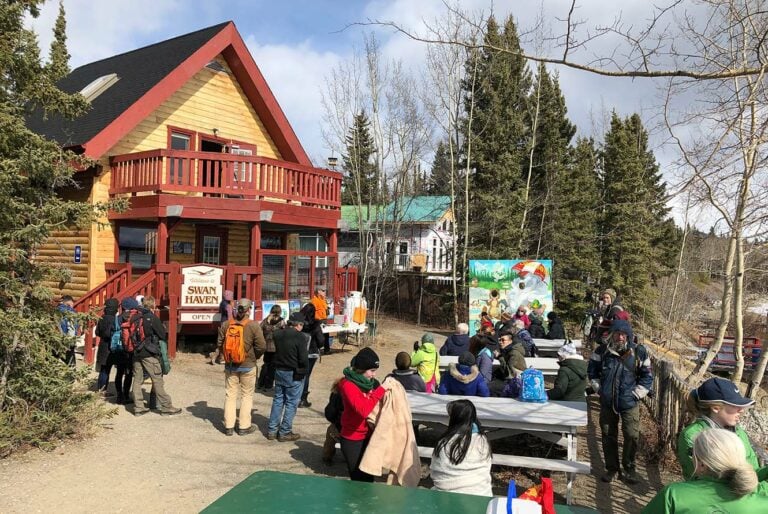Don’t be shocked if you recognize Sharon Vittrekwa in Argentina. Or Dennis Shorty in Brazil. Or Violet Gatensby in Uganda. They’re just three of 10 Yukon Indigenous artists whose work will travel around the world from now on, as part of the Global Affairs Canada Visual Art Collection.
The collection, which started in the 1920s, consists of more than 6,500 works that are displayed in Canadian embassies and buildings in more than 100 cities around the world.
“When (the work travels) to a new location, all the artists get updated and then they’re aware of where their work is, which is pretty cool,” says Teresa Vander Meer-Chassé, the Upper Tanana artist who curated the acquisitions for Global Affairs.
In addition to Vittrekwa, Shorty and Gatensby, those artists include Karrie Brown, Krystle Silverfox, Vashti “Nénests’ík Mā” Etzel, Heather Dickson, Sho Sho “Belelige” Esquiro, Jackie Olson and Kaylyn Baker.
When Vander Meer-Chassé first looked at the collection last November, she focused on how many Yukon artists were in the collection and, of those, how many were Indigenous.
Vander Meer-Chassé, who works as a freelance curator in addition to her own arts practice, says it’s common for collections to be interested in adding underrepresented artists. However, it’s also common for them to be unaware of what they have. It’s only when someone gets the chance to sit down and crunch the numbers, the way she did, that they know where they need to look.




